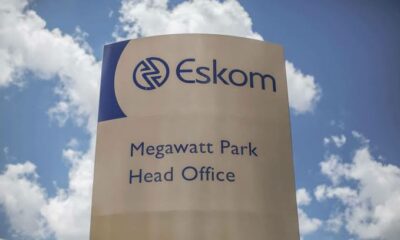News
Koeberg Unit 1 Delay a Bump, Not a Blow, in SA’s Load Shedding Recovery

Eskom says delays in nuclear unit repairs won’t derail the grid or bring back load shedding
In a country where power outages have become part of the national rhythm, any news about Eskom’s nuclear units tends to set off alarm bells. But despite a fresh delay in returning Koeberg Unit 1 to service, Eskom is urging South Africans not to panic and for once, there may be good reason to believe them.
Originally scheduled to return in July, the 930MW Koeberg Unit 1 now won’t be back online until the end of August. This comes after inspections found four faults in the steam generator tubes a tiny fraction, but enough to trigger Eskom’s safety-first protocols. Specialist teams, including international experts, were brought in, and the defects have now been repaired.
So what does this mean for the country’s fragile energy stability?
No Blackout Alarm Bells, Yet
Bheki Nxumalo, Eskom’s Group Executive for Generation, says the revised timeline won’t increase the risk of load shedding, pointing out that Unit 2 is still running at nearly full capacity, delivering over 940MW.
Crucially, South Africa’s Winter Outlook for 2025 doesn’t rely on Unit 1 returning on time. The plan to return 2,500MW to the grid this season is still on track, thanks to progress at Kusile and Medupi power stations.
And it shows. Since 15 May, Eskom has avoided load shedding entirely, logging just 26 hours of blackouts for the financial year to date a milestone many thought impossible just a year ago.
Beyond Koeberg: The Bigger Picture
While the Koeberg delay is making headlines, it’s part of a broader story and, surprisingly, that story isn’t all bad.
In the past few months:
-
Kusile Unit 6 (800MW) was synchronised to the grid in March and is expected to be fully operational by September.
-
Kusile Units 1, 2 and 3 were successfully reconnected to the repaired west stack with cleaner flue gas systems.
-
Medupi Unit 4, which had been offline since a 2021 explosion, finally returned to service in early July.
Together, these steps mark a meaningful turnaround in a utility once synonymous with crisis.
So, Are We Out of the Woods?
Not quite. Eskom’s system remains vulnerable. The Energy Availability Factor (EAF) hovers around 62%, well below the international benchmark of 80%.
The outage risk is still real: If breakdowns climb above 13,000MW, the chance of load shedding increases. If they hit 15,000MW, Stage 2 could be back for up to 21 days. But so far, aggressive diesel use and more stable generating capacity are helping Eskom stay ahead of the curve.
Critics have noted the cost of this diesel reliance, a solution that’s far from green or cheap. But in the short term, it’s buying South Africa valuable breathing room.
Public Sentiment: Hope, but with Caution
On social media, South Africans have responded to the Koeberg news with a mix of dry humour and cautious optimism.
“Delaying a ‘nail in the coffin for load shedding’… typical Eskom drama,” one user quipped on X. Another added, “At least it’s not sabotage this time. Progress?”
Meanwhile, business groups and energy experts continue to press for faster reforms, greater investment in renewables, and clearer policy direction. The sentiment is simple: fixing generation is great, but the grid needs a full transformation.
A Delay, Not a Derailment
The return of Koeberg Unit 1 may have been pushed to August, but it’s not the disaster it might have been a year ago. For once, Eskom appears to be sticking to its plan, and a bit of cautious optimism might not be misplaced.
South Africa isn’t out of the dark yet. But for now, the lights are staying on and that’s more than many of us dared to hope.
{Source: BusinessTech}
Follow Joburg ETC on Facebook, Twitter , TikTok and Instagram
For more News in Johannesburg, visit joburgetc.com


























